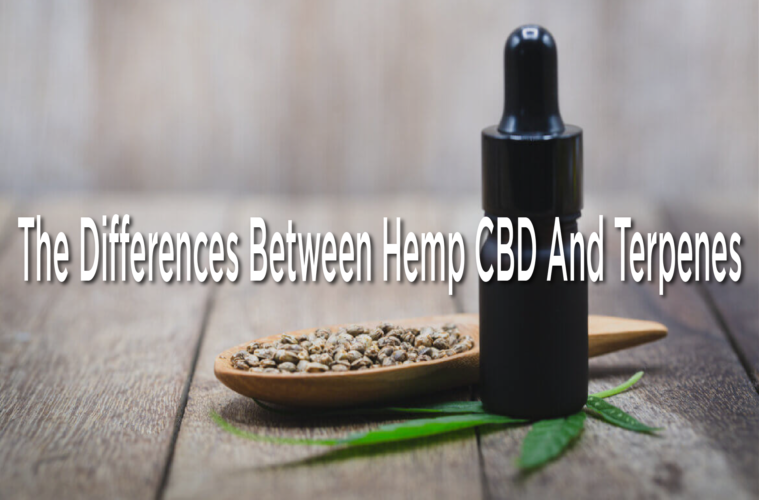This article was originally published on Does CBD Help. To View the original article, please click here.
Terpenes and cannabidiol compounds are present in the cannabis sativa plant. You might have come across these terms when searching for a CBD product. Here, we will discuss what these are and in what way these interact with our bodies.
What Is Cannabidiol?
Cannabidiol is among the many different chemical compounds called phytocannabinoids found in cannabis. Also known as CBD, cannabidiol has some potentially therapeutic properties. It is closely associated with tetrahydrocannabinol, a different phytocannabinoid active in cannabis. Cannabidiol has no mind-altering effect like THC, and this is the major difference between both phytocannabinoids.
Each of these cannabinoids interacts with cannabinoid receptors in the human body and thereby, shows the effects of it.
In What Way Cannabidiol Works
CBD interacts with the human ECS to bring its intended effects. The ECS should manage every bodily function, and it contains endocannabinoids. These molecules work similarly to a neurotransmitter, which is an endogenous chemical that should transmit body signals and balance the body’s working. The ECS is made up of CB1 cannabinoid receptors and CB2 receptors, and cannabidiol binds to these receptors.
CB1 receptors are broadly in the human brain and these deal with functions like memory, pain, and motor skill. Likewise, cannabidiol interacts with CB2 cannabinoid receptors, which help to manage the immune system and gastrointestinal system. Still, researchers are searching to find precisely how cannabidiol helps to treat a wide variety of health disorders.
Benefits Of Hemp-Derived Cannabidiol
Several individuals are looking for a natural treatment alternative to pharmaceuticals because many drugs have potential side effects. Cannabidiol has side effects, but these are negligible and are no cause to feel anxiety.
Cannabidiol can help to treat an array of medical issues, including inflammation, pain, anxiety, mental depression, multiple sclerosis, substance use disorder, and epilepsy. It is worth noting that the FDA has approved just one CBD product and that too for seizures in rare and severe forms of epilepsy. Nevertheless, there is enough anecdotal evidence to suggest that cannabidiol is potentially effective in treating numerous other health conditions.
Hemp-derived cannabidiol has anti-inflammatory effects, neuroprotective properties, anti-cancer effects, anticonvulsant properties, and antidepressant-like effects. According to a 2010 study, researchers concluded that CBD could inhibit the effects tetrahydrocannabinol has on the body.
Ways To Consume CBD
If you are interested in purchasing cannabidiol, you would be glad to know that it can be consumed in numerous ways. Here is an overview of some of these methods of CBD consumption.
Sublingual Consumption: For this, you will need to purchase a CBD tincture and dropper. Put some drops of cannabidiol below your tongue, hold it there for a minute and swallow.
Topical Application: There are many different types of CBD topicals, including CBD cream, salve, and lotion. Just apply a topical CBD product on your skin, and cannabidiol will be absorbed into your skin’s surface near the aforesaid receptors. The product is good for pain because it directly enters there, rather than going into the bloodstream.
Oral Ingestion: There are numerous edible products containing CBD, including gummies. When consumed orally, it takes time for CBD to take effect, but the effects of it last longer.
Inhalation: For this, you will need a CBD vape oil and vape pen.
What Do Terpenes Refer To?
Terpenes have been around for a long time. Terpenes are added in items for their flavor and aroma, plus these are behind the so-called entourage effect. This is the effect you get when numerous cannabis components work together. Terpenes are components that will determine how an item smells. For instance, these give orange its citrusy smell.
Besides phytocannabinoids, terpenes also play a part in healing medical problems. These and cannabinoids bind together for a high physical sensation. A combination of cannabis elements including cannabinoids works together to produce the aforementioned effect.
Terpenes can make any phytocannabinoid’s effects more intense or less powerful than these are. Every cannabinoid comes from cannabis sativa, but each strain can have different effects.
Now, let us take a look at some terpenes commonly found in the medical cannabis market.
- Linalool: It is added to a product to produce floral, candy, and citrus smells.
- Myrcene: It creates a smell of cloves.
- Trans-Caryophyllene: This terpene tastes like black pepper.
- Limonene: It produces a Citrus smell.
- alpha-Pinene and beta-Pinene: These terpenes can create a pine-like smell.
Many different things affect the growth of cannabis terpenes, including age, climate, the type of soil, and fertilizer. More than 100 terpenes are present in cannabis. Terpenes can not only give a product its flavor, but these can interact with other cannabis compounds as well. Many confuse terpenes with terpenoids. The former have hydrogen and carbon, but the latter are organic compounds that contain just oxygen.
Advertising disclosure: We may receive compensation for some of the links in our stories. Thank you for supporting Irvine Weekly and our advertisers.


